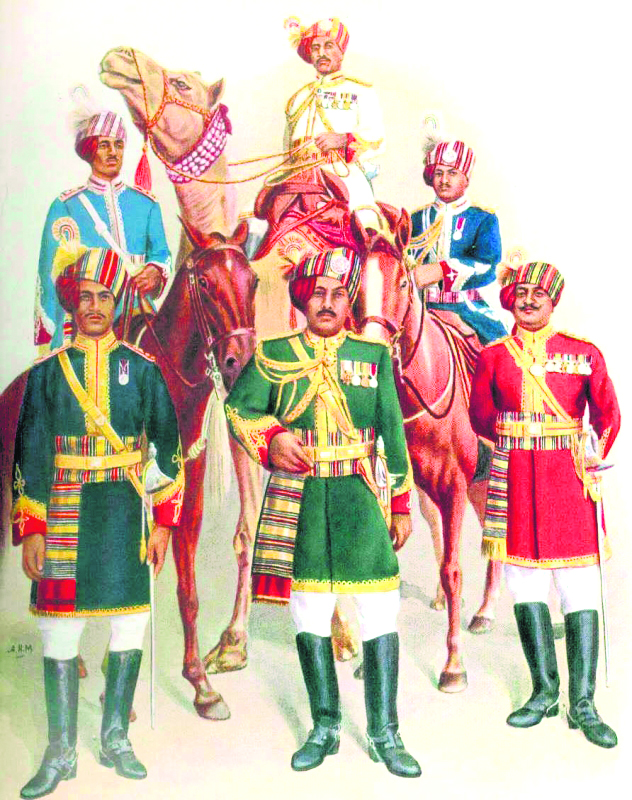The Maratha families are known not just for their penchant for the fine arts but also their legacy of performing arts. The dance form of Bharat natyam is traced to the Maratha courts of Thanjavur. The states of Gwalior and Indore being home to the famed Gwalior and Indore gharana. While the former boasts of maestros like P.V. Paluskar and Veena Sahasrabuddhe, the latter has fuelled the talent of many with its slow-tempo and leisurely raga development.


 (L-R) Artist Elanchezhiyan Pichaikannu, Kaushalya Reddy, Riddhima Saurabh Chadha with Dr(s) Raja Radha Reddy and Anu Bajaj
(L-R) Artist Elanchezhiyan Pichaikannu, Kaushalya Reddy, Riddhima Saurabh Chadha with Dr(s) Raja Radha Reddy and Anu Bajaj
Their love for living with the arts starts young. Even today many young royal scions indulge in music and classical dance, training their wards into performing artists and turning them into veritable child prodigies.
One such family is that of Shraddha Nikam, daughter of a noble family of Kolhapur who is not just a spectacular designer but also a trained chef. The Nikams are Nikumb Rajputs who trace their lineage to Lord Rama. Shraddha, a maestro in tapestry art and a truly talented designer takes bigger pride in the training she has had her truly talented daughter Riddhima Saurabh Chadha partake from none other than Guruji Raja and Guruma Radha Reddy. A love for music and the dance directing her to teach her little daughter Riddhima, in the intricate dance form of Kuchipudi
All of ten and already training in classical English vocals and piano, Riddhima revels in Kuchipudi that she learns at Natya Tarangini. She recently danced before a select audience, in the presence of her gurus for the opening of the art show by Art Positive curated by Anu Bajaj titled: Beyond the Myth.”
An exhibition explore the sculptors of acclaimed artist Elanchezhiyan Pichaikannu presenting a wide series of the resemblance of cow, bull, yogi and sacred trees inspired by the Indus valley civilization motifs. Especially Lord Shiva and his favourite Nandi bull. And what better way to salute Shiva and his faithful Nandi then with a performance of Kuchipudi in the gracious presence of Raja Reddy who across the world is referred to as dark Shiva.
Kuchipudi, like other classical dance forms in India, traces its roots to the Sanskrit Natya Shastra, a foundational treatise on the performing arts. The text, states Natalia Lidova, describes the theory of Tandava dance, the theory of rasa, of bhava, expression, gestures, acting techniques, basic steps, standing postures – all of which are part of Indian classical dances.
The dance-drama tradition in Andhra Pradesh is of ancient origins, and the region is mentioned in the Natya Shastra. Bharata Muni credits a graceful movement to Andhra region and discusses it as Kaishikivritti. The pre-2nd century CE text calls one raga as Andhri, that is from Andhra.
According to Manohar Varadpande, the Kuchipudi dance emerged in the late 13th century, when Ganga rulers from Kalinga were patrons of performance arts based on the 12th-century Sanskrit scholar Jayadev particularly the Gita Govinda. This royal sponsorship, states Varadpande, encouraged many poets and dance-drama troupes to adopt Radha-Krishna themes into the then prevailing versions of classical Kuchipudi. These were regionally called Vaishnava Bhagavatulu.
Brought back to its past glory by the dance gurus, Dr. Raja and Radha Reddy and Kaushalya Reddy, the dance form of Kuchipudi finds its presence in many a historic royal homes. As Shraddha puts it, “Our families were the custodians of living cultures and performing arts. I am so glad that not just us in our forties but also many of our little ones are interested in keeping the legacy of art alive.”













